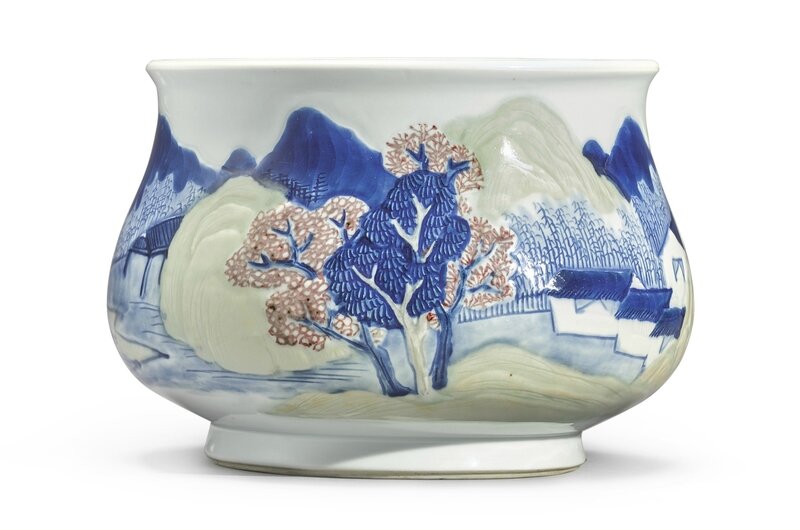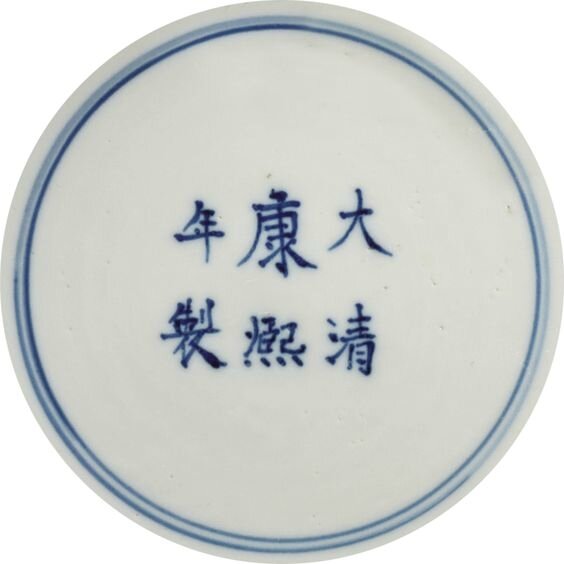of bombé form, the exterior with a continuous riverside landscape modeled in slip for a multi-dimensional surface, the distant mountains, nearby lodges, trees, and lone boatman on the water in underglaze blue set amidst celadon-glazed rolling hills, bright copper-red leaves accenting the foliage, the interior white, the base with a six-character mark in underglaze blue within a double circle, coll. no. 58.
The Jie Rui Tang Collection.
Provenance: Christie's Hong Kong, 17th January 1989, lot 735.
Collection of Mary Porter Walsh (1928-2012).
Sotheby’s New York, 29th November 1994, lot 367.
Marchant, London, 1996.
Exhibited: Imperial Porcelain of Kangxi, Yongzheng and Qianlong, S. Marchant & Son, London, 1996, cat. no. 11.
Literature: Jeffrey P. Stamen and Cynthia Volk with Yibin Ni, A Culture Revealed: Kangxi-era Porcelain from the Jie Rui Tang Collection, Bruges, 2017, pl. 15.
Note: Censers decorated in this technique are rare, however several brushpots, vases, and jardinières with this palette, texturing, and subject matter survive. An example of a brushpot of this type with a Kangxi six-character mark from the Qing Court Collection in the National Palace Museum is illustrated in Porcelain of the National Palace Museum: Enameled Ware of the Qing Dynasty (I), Hong Kong, 1969, pl. 1.
Sotheby's. KANGXI: The Jie Rui Tang Collection, New York, 20 March 2018, 11:00 AM

/https%3A%2F%2Fprofilepics.canalblog.com%2Fprofilepics%2F1%2F0%2F100183.jpg)
/https%3A%2F%2Fstorage.canalblog.com%2F03%2F02%2F119589%2F96711876_o.jpg)
/https%3A%2F%2Fstorage.canalblog.com%2F11%2F31%2F119589%2F94773502_o.jpg)
/https%3A%2F%2Fstorage.canalblog.com%2F20%2F83%2F119589%2F94772815_o.jpg)
/https%3A%2F%2Fstorage.canalblog.com%2F26%2F72%2F119589%2F75604929_o.jpg)
/https%3A%2F%2Fstorage.canalblog.com%2F59%2F60%2F119589%2F26458628_o.jpg)




/http%3A%2F%2Fstorage.canalblog.com%2F88%2F26%2F119589%2F129337200_o.jpg)
/http%3A%2F%2Fstorage.canalblog.com%2F51%2F59%2F119589%2F128976423_o.jpg)
/http%3A%2F%2Fstorage.canalblog.com%2F30%2F27%2F119589%2F128677718_o.jpg)